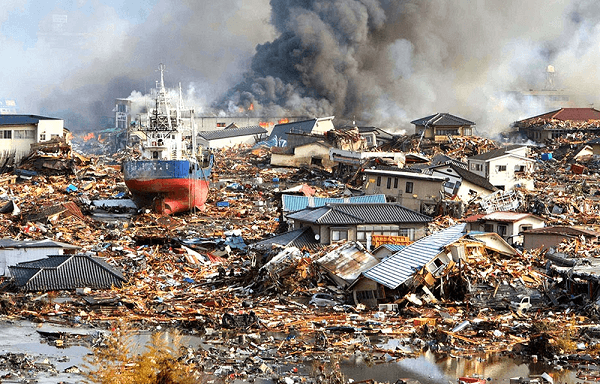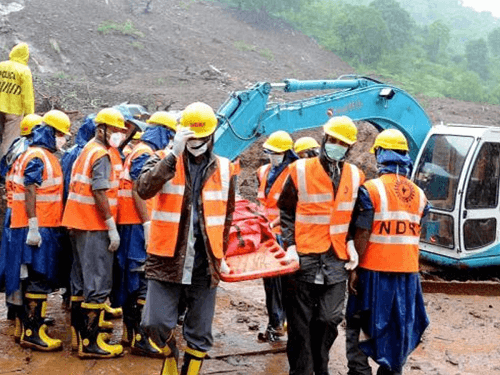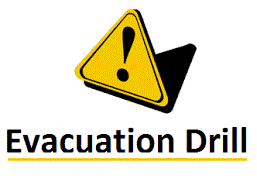Disaster Management EssayThe world is racked by disasters, some of which are awful yet controllable. Natural disasters, for instance, can be sudden events which cause significant destruction to property and lives. They can happen naturally, or humans can cause them. The emergency management process is essential to fix the damages caused by these catastrophes. With the process of disaster management, it is possible to limit the damage, and the dangers of the incident can be managed. The process is targeted at warding off disasters and reducing the consequences of events that cannot be avoided. Landslides, flooding, droughts and earthquakes are a major threat to India. The Indian government's disaster-management measures have significantly improved over the years. 
Some Common Natural Disasters1. TornadoesTornadoes are funnel-shaped, rotating clouds that develop because of powerful thunderstorms. With winds that are as strong as 30 miles/hour, extend from a thunderstorm and reach the ground. They are also able to go from static to running at 70 miles an hour in just a few seconds. Tornadoes may strike with little or no warning, leaving people in the affected areas with no time to seek shelter. Many suffer from emotional distress because of the sudden nature of tornadoes and intense storms. Insomniac anxiety, sleeplessness and other symptoms of depression are typical reactions to natural disasters. 2. EarthquakesThe cause of earthquakes is when the plates of the Earth shift. This causes an intense shaking of the earth that could last anywhere between a few seconds to several minutes. A mild initial shaking could get more intense and eventually turn violent. Earthquakes are fairly common, and they occur almost all the time in different parts of the world. Some areas are more prone to experiencing earthquakes than others. Even small earthquakes that result in small damage or destruction could cause anxiety for individuals (especially in regions that aren't used to the occurrences). Aftershocks can last over a period of time following an earthquake and are just as painful. 3. HurricanesStorms (tropical) originating from the Southern Atlantic Ocean, Caribbean Sea, Gulf of Mexico, and the eastern Pacific Ocean are known as hurricanes. Every year, hurricanes affect millions of people who live on the Atlantic as well as the Gulf coasts. They are known to cause destruction of life and property and create mental stress on their victims. Prior to or during, and after these kinds of storms, individuals typically experience intense anxiety, constant worry as well as sleep problems, along with other symptoms of depression. 4. FloodsFloods occur when the water level exceeds the normal mark and overflows in the areas which ordinarily remain dry. Floods can be caused by many circumstances, including hurricanes, tropical storms, dams that are broken or levees, or flash floods that occur within minutes or hours after torrential rain. Although flooding is more prevalent near the shoreline, particularly during hurricane season, it may be experienced anywhere differing in size and length. Even small gullies, streams and creeks which appear unaffected during dry weather could be flood-prone. 5. DroughtsDrought is a frequent regular meteorological phenomenon that can vary in its severity and duration according to the region in which it occurs. Drought is when the amount of precipitation falls lower than average for a prolonged period of time, typically for a season or more. It can also result from an inability to catch up with the rainy season or the rain timing with respect to the growth of the crop. 6. LandslidesA landslide is any massive movement of a mass of rock or debris down an incline. It is believed to be a type of what's known as "mass wasting," which is the process of sliding rock or soil because of gravity. Landslides are a common occurrence in certain regions of the world, especially hilly and mountainous areas. And depending on the dimensions, they have the potential to cause massive destruction. Landslides can result from various causes, including volcanic eruptions, earthquakes and torrential rains. Scientists are able to predict the slopes that are prone to landslides, but predicting the exact date of the occurrence of landslides isn't always possible due to the variety of elements involved in the formation of landslides. Stages of Disaster ManagementWith proper implementation and structured action, we can prevent or lessen the impact of natural or man-made disasters. There are certain stages involving the cycle of a disaster management plan which incorporate policies and emergency responses required for a prospectively complete recovery. The stages are - 1. PreventionThe best way to manage catastrophes is to take a proactive approach to their prevention rather than hurrying to find a cure. This means recognising the risks that could be present and establishing infrastructure that can reduce the impact. This phase of the management cycle is the establishment of permanent measures to limit the risk of disaster. Implementing an evacuation plan at an institution, teaching the teachers to lead students to secure structures in case of the occurrence of a fire, tornado or earthquake and preparing a solid foundation for skyscrapers with high rises to be ready for earthquakes and designing the city in a manner which reduces the possibility of flooding are a few examples of the measures taken to reduce the risk of disaster. 2. MitigationMitigation is the primary and foremost effort to protect human lives during the time of the disaster or their recovery following the effects. The actions taken may be both structural as well as non-structural. The structural mitigation options could involve changing the physical attributes of a building or surrounding area to reduce the effect, such as taking down the trees that surround your home and ensuring that storms do not destroy the trees and then send them flying into your house. Non-structural measures may include modifying the local or building codes to improve safety and reduce the risk of accidents happening. 3. PreparednessIt is a procedure that includes a social group where the educated or the chief of the entire community, organisations and institutions present the strategy that is expected to be carried out in any catastrophe. It's a continuous process based on the anticipation of an event and involves training as well as evaluating and taking corrective measures with the greatest degree of alertness. A few examples of such actions include fire drills, shooter drills, and evacuation exercises. 4. ResponseThe response is an action that is taken after the catastrophe is over to salvage some life from the disaster. It involves both long-term and short-term actions. In ideal circumstances, the leader of disaster management will oversee the use of resources during the process of restoration and reduce the possibility of any further property loss. In this phase, the region affected by the catastrophe is cleared of any debris that creates a risk to humans or the environment. As an example, the evacuation of the city of Chernobyl, Ukraine, after the Chernobyl Nuclear Disaster is a response to a disaster. 
5. RecoveryThe fifth step in planning for disasters is the rehabilitation phase. This may take years to take place. The greater mass of a city is often a part of the reconstruction following the effects of a catastrophe. The most famous example could be one of the Hiroshima as well as Nagasaki nuclear explosions in Japan. The residents of these cities took many years to recover from the human-caused catastrophe. The after-effects are still visible there. There was a long period of work to stabilise the region and restore vital personal or community activities. The recovery phase prioritises the necessities of humans, like drinking water, food transport, utilities, and healthcare, over other services that are less essential. In the end, this stage is about working with communities, individuals and companies to assist one another to restore the normal or adjust to a new normal, as in the Covid-19 pandemic. Disaster Management in IndiaThe National Disaster Management Authority (NDMA) is the primary agency responsible for establishing guidelines and rules for disaster management to ensure a quick and efficient emergency response to disasters. It is an independent, autonomous and constitutionally-established institution dealing with every concern related to disaster management in the nation. The NDMA creates and enforces national disaster policies at the federal and provisional levels. It also works closely with various ministries of the government as well as military forces and United Nations organisations based in the country in coordinating efforts to carry out disaster management such as search and rescue and other humanitarian operations both in the country and overseas. The NDMA aims to build a sustainable operational capacity and has the skills to carry out its humanitarian missions at maximum capability. There is an additional fund dedicated to mitigation called the "National Disaster Management Fund" (NDMF). NDMA constitutes the Prime Minister of India as its Chairman, a Vice Chairman with the rank of Cabinet Minister and eight members who hold the title of Ministers of State. Each member is assigned an established functional domain that spans several states, as well as disaster-specific regions of concern and focus. The main functions performed by NDMA include:
The catastrophe has had direct and indirect repercussions on human life and has been devastating. There have been deaths as well as losses of stock. Natural disasters are inevitable regardless of the methods in place to prevent or predict their effects; we can't stop the possibility of them occurring. In the process of preparing our plans for managing the emergency, the most effective thing to do is to stop the actions which are harmful to the environment and cause their degradation. When a catastrophe strikes, it causes massive destruction and death. When there is an event like floods, earthquakes or other natural catastrophes, the majority of people are forced to flee, and a significant number of people are killed due to it. The real emergency is initiated by providing first aid to injured people and rescue efforts for those who have been affected. To minimise the risk of human life, active participation by everyone is required in the disaster management process. Disaster Management ChallengesThe handling of natural disasters is an arduous job with a number of shortcomings to be identified. Because the particular hazards and catastrophes that occur in certain nations aren't fully understood, the government is not able to implement disaster management in the case of an unexpected catastrophe. It's also a matter of a nation's technical capacity being inadequate. The government's support is needed to implement disaster management frameworks. Because of the huge population of the country, the disaster management strategy is based on public education. However, there isn't any psychological counselling for people. The more vulnerable people are likely to develop post-traumatic stress disorder and mental illness. How to Act as a Responsible Person During a Time of Disaster?
As is the famous saying, "Prevention is better than Cure" each individual should be prepared to deal with natural disasters anytime in their lives. Some people can have the edge over others in the management and control of disasters. Still, everyone can learn some basic skills that can come in handy if an emergency situation arises. Pandemics can train us, as a community, to deal with catastrophes and also pressurise various organisations to introduce infrastructural changes in order to prevent damage from calamities like earthquakes, floods etc. This also calls for organising evacuation drills in schools, communities and other institutions so that people can reach a safe place without any chaos. Acting responsibly and being equipped, as individuals and as a community, can greatly help us minimise the effect of natural disasters and prevent any loss of life. Responsible citizens are well-versed with the steps to be taken in case of such a situation. 
ConclusionDisaster management aims at reducing human suffering that occurs as a result of natural disasters. If the government and the citizens take adequate steps both, then safety in the face of calamities can be ensured, and destruction can be avoided to a great extent.
Next TopicEssay on Tiger
|
 For Videos Join Our Youtube Channel: Join Now
For Videos Join Our Youtube Channel: Join Now
Feedback
- Send your Feedback to [email protected]
Help Others, Please Share










